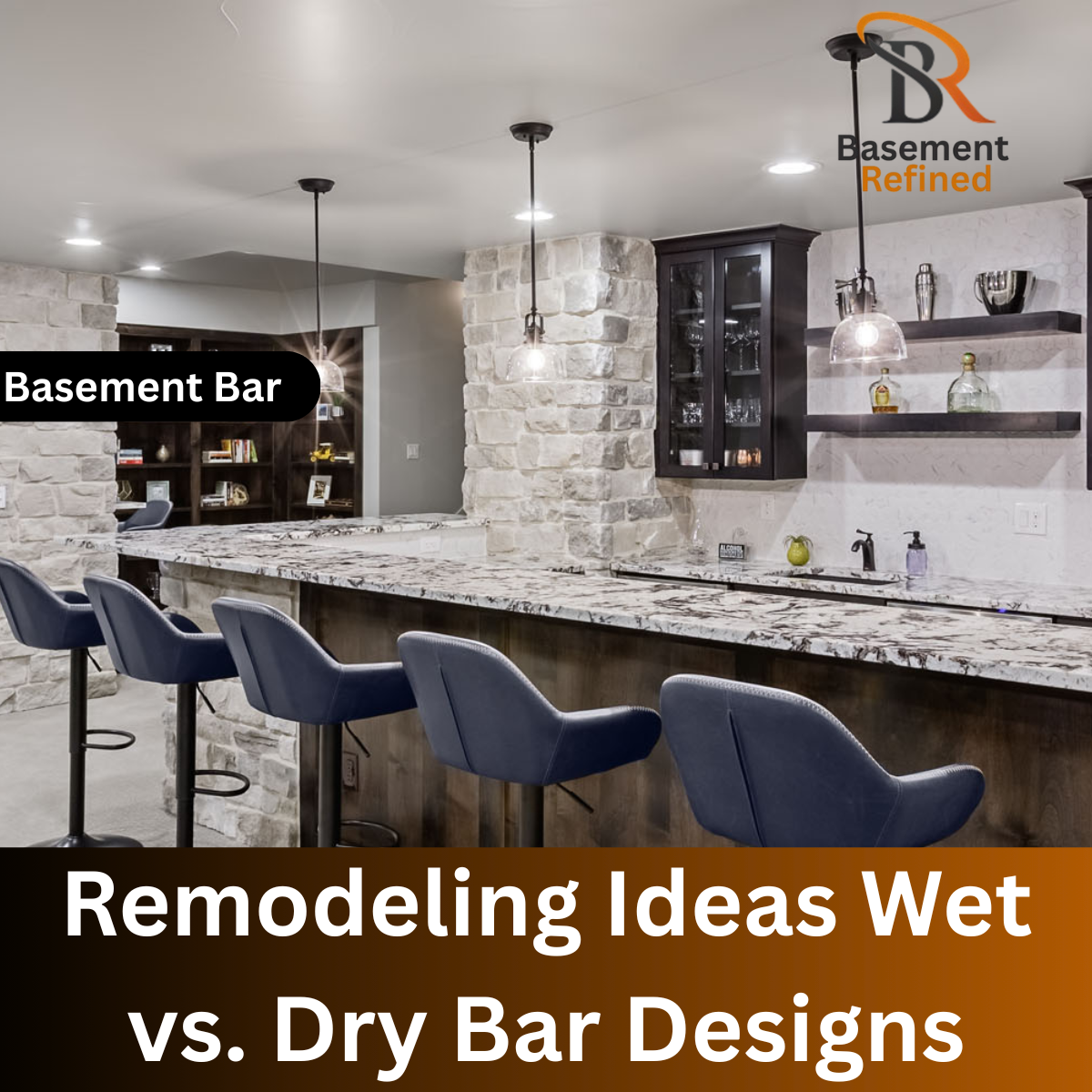Opening Hook
Picture this: on a chilly morning in a suburban home in the USA, Sarah climbs down into her basement, flips on the ambient LED lights, and steps into her own basement home gym—complete with rubber-tile flooring, a wall of mirrors, and a small cardio zone. What once was a dusty storage room is now a dedicated fitness sanctuary. If you’ve ever considered converting your lower level into a workout space, you’re in the right place—because creating a truly functional “home gym basement remodel” involves more than hauling in a treadmill. Let’s dive into how to turn your basement into the best basement workout room.
Audience Focus
This article is tailored for homeowners in the USA who have a basement (or are thinking about using one) and want to build or remodel a home gym. You might be a busy professional who struggles to get to the commercial gym, a parent wanting a convenient workout space at home, or a fitness enthusiast looking to upgrade an existing setup. You might also already have an unfinished basement and are asking: “How do I layout this space best? What flooring should I use? What remodeling ideas make sense for a basement gym?” Whether you live in a Midwest two-story home, a suburban ranch with a daylight basement, or a split-level house, the ideas apply—so let’s go.
Why Choose a Basement for Your Home Gym?
Starting with a clear main idea: basements often offer untapped potential for gym conversion.

Many houses in the USA have basements with under-used square footage. Instead of leaving it as storage or a “junk room,” turning it into a gym gives you a dedicated workout space at home. The advantages include:
- Privacy & convenience: No commute, no waiting for machines.
- Sound isolation: Sound-proofing may be easier since it’s below ground.
- Climate control: With proper insulation and flooring, you get a comfortable environment.
- Higher property value: Finishing your basement can add functional living space.
However, you must plan well to avoid common pitfalls like low ceiling height, moisture issues, or poor layout. Too many home gym basement remodels downplay sectioning, flooring, and lighting.
Planning Your Basement Gym Layout
Assess Your Space
Begin by evaluating your basement’s dimensions, ceiling height, existing structural features, and access. For instance, if your ceiling height is under 7 feet, you’ll need to pick equipment accordingly (folding machines, wall-mounted racks, etc). As one remodel site explains: “Check the ceiling height before installing tall equipment like a squat rack.”
Define Workout Zones
A strong layout splits the space into functional zones. For example:
- Cardio zone (treadmill, bike)
- Strength zone (power rack, bench, free weights)
- Mobility/stretch zone (mat, foam roller, yoga space)
For instance, a basement gym design blog describes “zoned functional training layout: split the basement into clear workout zones” This helps ensure flow and prevents the gym from feeling cluttered.
Traffic & Safety Considerations
Make sure there’s sufficient clearance around equipment so you can move freely and safely. Also factor in exits, ventilation, and lighting so that the space feels inviting rather than dungeon-like. One user on Reddit wrote when discussing layout:
“I put in TONS of effort thinking about the details for layout, arrangement/clearances, & overall flow moving from station to station to avoid feeling too cluttered.”
Budgeting Your Remodel
Remodels vary in cost depending on how much you finish vs. simply equip. According to data:
- A basic basement gym remodel might run $3,000–$7,000, including flooring, paint, lighting, minimal equipment.
- The average cost to build a home gym is about $7,750 (with a range of $2,150 to $13,750).
- Flooring and waterproofing may add additional cost.
It’s wise to set a clear budget, prioritize flooring and layout first, then equipment.
Choosing the Best Basement Gym Flooring
Why Flooring Matters in a Basement Home Gym
When converting a basement, flooring is one of the most critical elements. A poor floor can lead to slipping, cold feet, noise transmission (especially if weights drop), and moisture issues. As one article explains, for basement gyms you need “insulation, joint protection, moisture resistance, and sub-floor protection.”
Top Flooring Options
Rubber Flooring (Rolls or Interlocking Tiles)
- Excellent for weightlifting areas. “Rubber flooring tiles are very durable and slip-resistant”
- Handles heavy weights, damp basements, and protects concrete sub-floor.
- Example: rolled rubber flooring over concrete is a top-choice.
- Downsides: heavier to install, smell initially.
Foam Tiles
- Affordable, easy DIY install, comfortable for bodyweight workouts, yoga.
- Not ideal for heavy weights; may not absorb as much impact.
Vinyl (Luxury Vinyl Plank / Tile)
- Good moisture resistance. “Vinyl flooring provides a sleek, professional appearance while offering good moisture resistance.”
- Less impact absorption than rubber/foam.
Carpet Tiles / Cork
- Warm and comfortable; good for stretching/yoga zones.
- Not recommended for heavy equipment or dropped weights.
Flooring Installation Tips for Basements
- Perform moisture test before installing any flooring. Basements may be prone to dampness.
- Use double-sided carpet tape or adhesives for rolls in basement scenarios.
- Consider insulation under flooring to improve thermal comfort—especially in cooler basement spaces.
- For equipment zones (like squat racks), ensure thicker, higher density flooring beneath.
Choosing the Right Flooring by Workout Type
| Workout Type | Best Flooring |
|---|---|
| Heavy weightlifting (barbells, power rack) | Thick rubber rolls or dense interlocking rubber tiles |
| Cardio + general fitness | Rubber or vinyl over concrete |
| Yoga, stretching, mobility | Foam tiles or rubber + soft mat overlay |
| Multi-purpose family space with occasional workouts | Vinyl or carpet tiles in non-equipment zones |
By matching your flooring to your workout type and basement condition, you’ll create a safer and more motivating “best basement workout room.”
Designing Your Basement Gym Layout
Start with Equipment Selection Based on Space
Your layout will depend heavily on the equipment you intend to use. For example:
- If you install a full power rack, you’ll need ample ceiling height and clear wall space.
- For cardio machines (like a treadmill or folding bike) a narrower zone near a wall with a tablet or TV works well.
- For functional fitness/movement space, leave an open floor area with mats for bodyweight or HIIT.
Sample Layouts
- Straight‐Line Layout: Cardio machines along one wall, racks and free weights opposite, open floor in the centre.
- Zoned Layout: Use rugs or flooring changes (e.g., rubber vs foam) to demarcate strength vs cardio vs stretch zones. For instance, one design site suggests splitting the basement: “one area for strength … another for cardio machines … and a mat area for yoga or HIIT.”
- Circular/Flow Layout: For circuit training: cardio → strength → mobility in a flowing circle, enabling efficient transitions.
Lighting, Mirrors & Aesthetics
- Use bright, cool lights or LED strips to create an energised gym vibe. One article recommends LED strip lights to raise energy levels.
- Mirrors help with both form checks and making a basement feel larger. “Installing large wall mirrors makes the room feel twice as big”
- Wall colours: Neutral or bold tones depending on your style. A finished look motivates consistency.
Ventilation and Climate Control
Basements can be cooler, humid, or lacking in fresh air. Make sure you have proper ventilation or dehumidifier, especially when you’ll be sweating heavily or using electronics. Consider a ceiling fan or portable HVAC device.
Storage & Organization
Clutter kills motivation. A dedicated storage wall or rack for dumbbells, kettlebells, bands, yoga mats ensures the space remains tidy and inviting. According to one source: “Install wall-mounted racks for dumbbells… A tidy gym feels intentional, and when things are easy to access, it becomes easier to commit to consistent workouts.”
Home Gym Basement Remodel – What to Consider
Moisture & Basement Conditions

Because basements are below grade, moisture is a real concern. Before starting a home gym basement remodel, check for water intrusion, signs of dampness, and ensure you have a vapor barrier or insulation as needed. Flooring choice (as discussed above) will play a big role.
Electrical, Lighting & Soundproofing
- Add dedicated outlets for treadmills, bikes, or TVs.
- Consider overhead lighting and task lighting over equipment.
- Soundproofing may be necessary, particularly if others live above or adjacent. One design guide suggests installing acoustic panels if sound could be an issue.
Structural & Ceiling Height Limitations
Support beams, ductwork, low ceilings can impact equipment choice. Measure carefully and plan for clearance. If your ceiling is low, opt for wall-mounted racks or foldaway equipment. Also weight of equipment should be considered with respect to basement floor strength.
Cost Estimates & Prioritisation
Remodel cost ranges vary widely: From minimal upgrade to full finishing. One estimate: basement gym remodels range from basic ($3k-$7k) to luxury ($15k+). Flooring installation alone may cost $200-$4,000 depending on size and materials. Prioritise:
- Floor + moisture control
- Adequate lighting & ventilation
- Layout & zones
- Quality equipment
Real-Life Case Scenario: The Miller Family’s Basement Gym
Let’s walk through a story to make this relatable. John and Emily Miller live in a suburban home in Ohio. They have an unfinished basement of about 400 square feet with a ceiling height of 7’8”. John is a busy sales manager; Emily works part-time and wants a convenient workout space at home so they can both train early morning before the kids wake up.
Step 1: Assessment & Goal Setting
- They decide they want both cardio and strength zones and a stretching/yoga corner.
- Ceiling height is okay for a half-rack but full Olympic lifting may be limited. They opt for an adjustable bench, dumbbells, and compact rack.
Step 2: Flooring & Prep
- They choose interlocking rubber tiles in the strength zone, foam tiles for the stretch zone. They test for moisture and install a vapor barrier. The contractor recommends rubber for its shock absorption and moisture resistance.
- They install LED lighting and mirrors along one long wall to open up the space.
Step 3: Layout
- Entry zone near stairs becomes cardio: folding treadmill + wall-mounted TV.
- Center of the room is the open floor for functional movement or stretching.
- Side wall holds dumbbells, rack, gym mats.
- They paint the walls a light grey and add motivational artwork. They also put a small dehumidifier and fan.
Step 4: Usage & Outcome
Within six months, both John and Emily report they use the space at least 4-5 times per week (previously John went to gym twice per week). The convenience and design made a difference. They say the “basement gym layout” makes the space feel like their gym, not a spare room. Friends and family occasionally join for workouts, making it a family fitness hub.
FAQs (Featured Snippet Style)
Q1: How much space do I need for a basement home gym?
A: It depends on your equipment and goals. According to remodel advice, a basic setup requires less square footage if you focus on bodyweight and dumbbells, while more equipment demands wider clearances.
Q2: What is the best flooring for a basement gym?
A: For heavy equipment and dropped weights, rubber flooring (rolls or interlocking) is best because of durability and impact absorption. For stretching/yoga zones, foam or vinyl may suffice.
Q3: How much does it cost to remodel a basement into a home gym?
A: Basic remodels range from $3,000–$7,000. Mid-range may go $8,000–$15,000+. Equipment cost adds on top.
Q4: Can I build a home gym in a basement with low ceiling height?
A: Yes—choose equipment that fits (folding machines, wall-mounted racks). Keep clearance in mind and consider limiting overhead lifts. Layout smartly.
Q5: How do I keep my basement gym dry and well-ventilated?
A: Test for moisture, install vapor barrier or dehumidifier, ensure HVAC/ventilation, pick moisture-resistant flooring. Rubber and vinyl perform well in damp basements.
Ins & Outs of “Basement Gym Flooring” vs “Home Gym Basement Remodel”
This section explains how these terms intertwine for your project.
- When we talk about basement gym flooring, we are referring to the specific choices you make underfoot—materials, installation, suitability to basement conditions.
- When we talk about home gym basement remodel, that covers the broader renovation: walls, lighting, HVAC, layout, equipment, flooring, and aesthetic.
- A “best basement workout room” is the end-goal: it integrates flooring, layout, equipment, and user experience.
By focusing on flooring early in your remodel you set the foundation (literally) for a successful layout and equipment choice. That’s why many experts emphasise flooring first.
Five Pro Tips to Make Your Basement Home Gym Exceptional
- Zone clearly: Use different flooring textures or colors to divide cardio/strength/stretch areas.
- Prioritise flooring before equipment: Don’t buy all the gear and then realise your floor caves or is too slippery.
- Install quality lighting and mirrors: These make a big psychological difference—making your basement feel like a real gym.
- Manage moisture and ventilation: One wet season can ruin equipment; treat your basement like you would a finished room.
- Adapt equipment to the space: If ceiling height is low, go for adjustable dumbbells, folding benches, vertical racks; if space is wide, leave an open zone for mobility workouts.
Closing
Whether you’re planning to transform your empty basement into a functional, motivational basement home gym or you’re refining an existing space to become the best basement workout room, the keys are clear: start with a smart layout, select flooring that fits basement conditions and your workout style, zone your space thoughtfully, and finish with lighting and equipment that keep you committed. Implementing these ideas means you’ll build not just a room—but a place you want to go and train.
Ready to begin? Grab a tape measure, sketch out your ideal layout, and explore flooring samples this weekend. Then ask yourself: in one year, what will my workout routine look like in this space? I’d love to hear how your remodel develops—feel free to share your floor plan or ask for advice. What’s the first piece of equipment you’ll bring into your new basement gym?
🏗️ Basement Project Calculator
Latest Post
-
How to Build a Legal Basement Apartment in the USA | Guide
Opening Hook Imagine this: you’re standing in the nearly-finished basement of your home in the USA, and the monthly rent from the future tenant—or perhaps your aging parents moving in with you—is just about enough to cover your mortgage. You’ve envisioned your own “in-law suite,” financial freedom, or added flexibility. But then, you pause and…
-
20 Best Basement Man Cave Ideas for the Ultimate Space
Imagine this: you come home after a long week in your busy USA-based life, head downstairs, flip on the lights in the basement, and step into your very own retreat — a space built just for you. That’s the magic of basement man cave ideas, a growing trend for homeowners who want a unique sanctuary…



